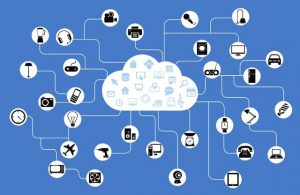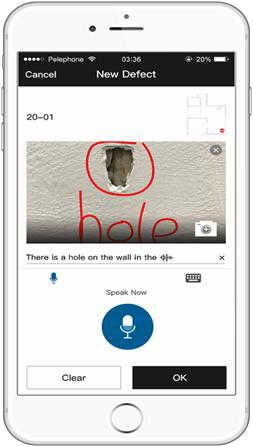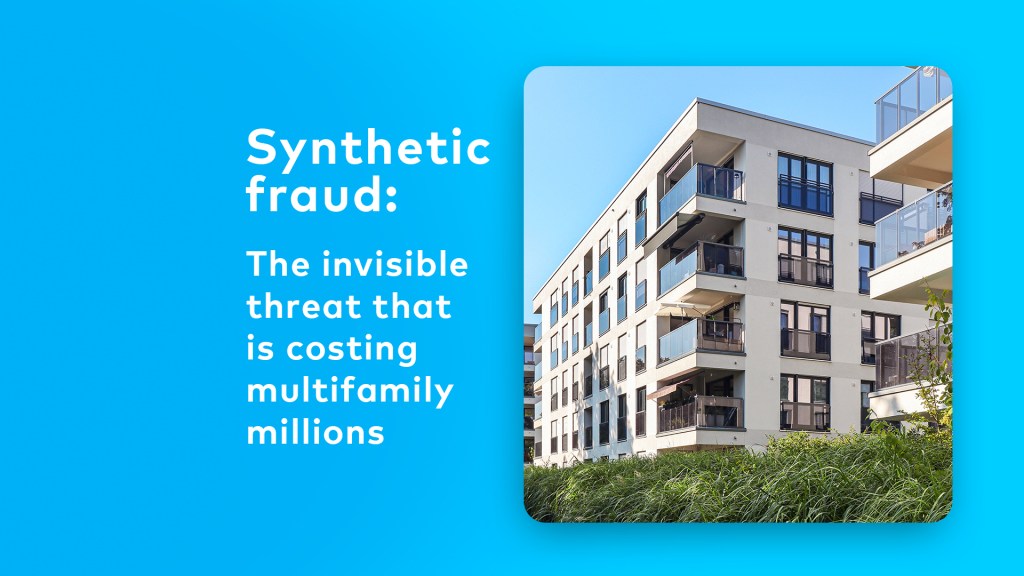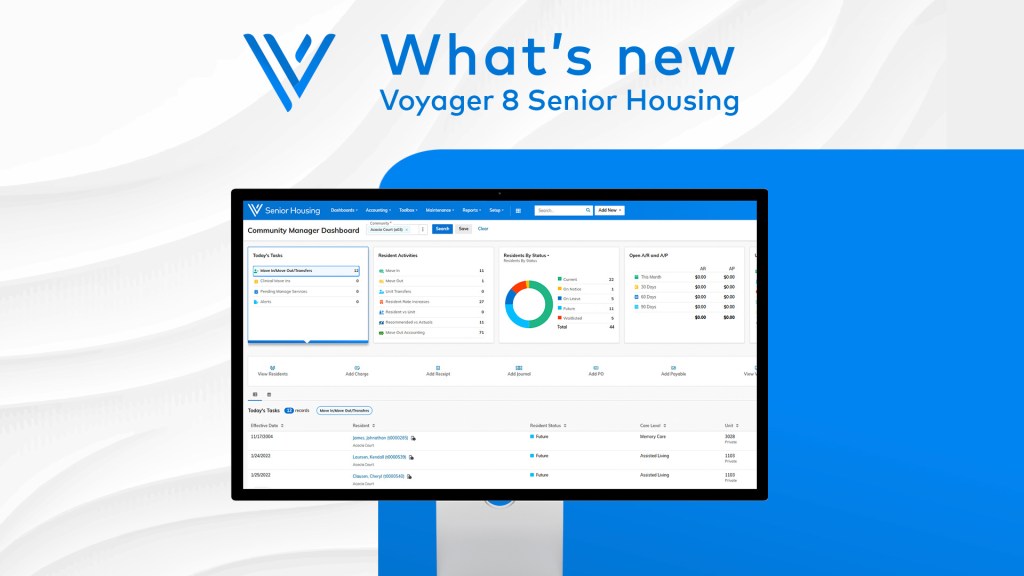By Yardi Blog Staff on February 20, 2019 in Technology
Editor’s note: By now, everyone has heard about the Internet of Things (IoT), which refers to the billions of devices around the world that are now connected to the internet, collecting and sharing data. Turning dumb objects – from refrigerators to cars to watches – into intelligent aggregators of data creates a new layer of machine learning, and digital communication.
This merging of the digital and physical can be found in almost every industry, and is a significant growth area for real estate. Smart city projects are filling select urban areas with sensors, enabling them to understand and control the environment. Within a building, energy efficiencies can be made and predictive maintenance performed. Asset managers can now make better decisions based on real time data that doesn’t just create more awareness around the asset’s current position, but how it can generate more market value.
So what’s behind the explosive growth of IOT? The following article by Yuen H. Lee of Augmentum, explores further.
IoT is about connecting things that weren’t previously connected. Devices surroundin g our everyday lives are omnipresent. Light bulbs, switches, wall clocks, door locks, appliances, etc. Going further, they may include devices we do not see but are omnipresent anyway: circuit breakers, HVACs, home gas shutoff valves, elevator controls, automobile parts, sensors, and smart phones.
g our everyday lives are omnipresent. Light bulbs, switches, wall clocks, door locks, appliances, etc. Going further, they may include devices we do not see but are omnipresent anyway: circuit breakers, HVACs, home gas shutoff valves, elevator controls, automobile parts, sensors, and smart phones.
In a 2018 Bain & Company study, it is estimated that the combined markets of the Internet of Things (IoT) will grow to about USD 520 billion in 2021, more than double the USD 235 billion spent in 2017.
A tripped smart circuit breaker can notify the homeowner what and where the problem lies. A group of tripped smart circuit breakers in a neighborhood can alert the utility supplier that a bigger problem may exist. An automobile smart sensor can register a sharp vibration over a pot hole or a speed bump (if a pot hole, city maintenance can be notified). A group of smart sensors from different automobiles registering similar vibrations at the same GPS location may enable the map navigators to alert the drivers to avoid or slow down. The possibilities are boundless.
IDC predicts that the worldwide installed base of Internet of Things (IoT) endpoints will grow from 14.9 billion at the end of 2016 to more than 82 billion in 2025. In a separate 2018 study, Frost & Sullivan estimated that Building Automation systems and Security systems are expected to account for over 50% of all IoT devices.
At this rate, the Internet of Things may soon be as indispensable as the Internet itself. However, according to a Cisco 2017 survey, almost three-fourths of IoT projects are failing. Human factors such as culture, organization, operation and leadership are often cited as the critical success factors for Digital Transformation and Industry 4.0 initiatives. IoT initiatives are no exception. Success is not just about technology.
Security, integration with existing technologies, and uncertain returns on investment are cited by a Bain survey as the three biggest barriers to greater IoT adoption in the enterprise.
IoT deployments create security risks. Cyber attacks on traditional server based systems is as old as the internet itself. Enterprise systems have endured and fought with these problems for decades. An alarming consequence of the lighting speed of IoT adoption is that many of these tried and true traditional network security protocols have often been overlooked in deference to the exotic functionality promises of the IoT ecosystems. A casual hacker, using a free hacker tool downloaded from the internet, will not have too much difficulty in hacking everything from baby monitors to laptop cameras. The Blockchain enabled Internet of Things using cryptographically secured, immutable distributed ledger technology may provide a relatively straightforward answer to a very complex security issue.
The Ubiquitous Smart Phone – A Smart Gateway and A Smart IoT
In many enterprise IoT applications, the smart phone is used as a gateway. An IoT gateway is a physical device that connects the internet enabled devices-sensors to the cloud and from the cloud. IoTs generate  a tsunami of data through their sensors. An IoT gateway can preprocess data, aggregate data if needed, even wrap a security blanket around data before sending it to the cloud. Omnitracs, a global transportation management company, uses smart phone as a smart IoT gateway in their enterprise-grade fleet management solution, transforming transportation through connected technology and insight. IoT gateway securely collects the data, encrypts, compresses, sends, and manages the network stability issues. Smart IoT gateway, such as the use of smart phone, is capable of collecting, aggregating and analyzing the truck driver and vehicle performance, potentially even turning data into insights, before transmitting to the cloud. This has a huge impact on response time, network performance and cost savings, especially if the transmission is through cellular towers.
a tsunami of data through their sensors. An IoT gateway can preprocess data, aggregate data if needed, even wrap a security blanket around data before sending it to the cloud. Omnitracs, a global transportation management company, uses smart phone as a smart IoT gateway in their enterprise-grade fleet management solution, transforming transportation through connected technology and insight. IoT gateway securely collects the data, encrypts, compresses, sends, and manages the network stability issues. Smart IoT gateway, such as the use of smart phone, is capable of collecting, aggregating and analyzing the truck driver and vehicle performance, potentially even turning data into insights, before transmitting to the cloud. This has a huge impact on response time, network performance and cost savings, especially if the transmission is through cellular towers.

Smart phones today function both as IoT gateways and IoT devices. Smart phones have many built-in sensors – accelerometer, gyroscopic sensors, barometer, proximity sensor, microphone and camera. Digital photo metadata (a set of data that describes other data) allows information about a photo to be transported with a photo, in a way that can be understood by other software and hardware, regardless of the format. A digital photo depends on metadata to provide the context and the semantics meaning of the photo to provide information such as when (timestamp) and where (GPS) the photo was taken. Innovative enterprises have started to further exploit the potential of the smart phone as a tool in their digital transformation, injecting human intervention into an IoT network, and to deliver business values. Success in digital transformation sometimes is demonstrated in an industry that is not natively digital.
A case in point – Ananda Development is a leading property developer specializing in urban residential high-rise condominiums in Thailand. As a property developer, one of Ananda Development’s most important activities is handing over a completed condominium to a buyer. The business only realizes revenue when the buyer signs the acceptance form for the property. Before this step is completed, an Ananda Development inspector and the buyer conduct detailed checks of the condominium for any build variations that need to be rectified. Using Google Cloud Speech-to-Text API and Cloud Vision API, Ananda Development created a property transfer application for mobile devices to automate and streamline condominium inspections, by simply taking digital photos. [Ananda Transfer App, Google] This is a human to network use of smart IoT and AI at its best. Ananda Development saved hundreds of thousands of dollars in just the first few months of deployment, leveraging off-the- shelf technologies and digital photo metadata.
Metadata from an IoT device or from a digital photo is subject to security risks just like any other type of data. Extra measures are required to secure and protect metadata from unauthorized access, alteration after the fact, and intentional falsification. Blockchain and smart contracts (computer protocols intended to digitally facilitate, verify, or enforce the performance of transactions), are capable of ensuring that the sensors data collected from the IoT devices is authentic.
Industrial Internet of Things (IIoT) – Digital Factory of The Future
The deployment of IoT is spreading in the manufacturing industries at an accelerated pace. Industrial Internet of Things (IIoT), running the digital factory of the future, has the potential of generating outsized business value to the industry. Many have foretold that IIoT will form the bedrock of the coming fourth industrial revolution, Industry 4.0. IIoT allows the tracking of the products, the machineries that produce them, and the factory workers who operate them in an undisputable recording of the what, when and how they happen in the factory. For Lean manufacturing (a systematic method for waste minimization within a manufacturing system without sacrificing productivity), IIoT will be able to facilitate the identification and the elimination of waste to improve quality and reduce cost.
Critical manufacturing operational data generated by IIoT sensors helps factory operators to make informed operational decisions, improve efficiency and reduce waste. These same data, if they can be secured at the source, and be transparent to other stakeholders (such as the next tier manufacturer and eventually the buyer of the finished goods), has the potential of lowering the cost of audit and compliance, eliminating quality disputes, and bringing integrity and verifiable trust to the manufacturing process.
An IIoT Blockchain based digital factory of the future allows one single version of truth and built-in trust for both the machines and the workers of the factory network to have access to the same data at all times. Every transaction, generated by the IIoTs, once recorded in Blockchain, is unalterable after the fact. The end manufacturer can trust the first tier manufacturer, who can trust the second tier manufacturer, and so on and so forth.
Internet of Things and Blockchain – A Match Made in Heaven?
Internet of Things and Blockchain are converging. By 2019, IDC predicts that 20% of all IoT deployments [IDC, WW IoT Prediction] will have basic levels of Blockchain services enabled. At the same time, more than 75% of IoT device manufacturers will improve their security and privacy capabilities.
Survey after survey, it is quite clear that the Blockchain momentum is on the cusp of shifting from the mode of learning and experimenting, to that of picking a business use case and building a practical business solution. As one researcher puts it, it is like switching from ‘Blockchain tourism’, to finding a home within the enterprise, regardless of the temporary nature of the home for Blockchain. Blockchain provides IoT device identification,
authentication, and secure data transfer between the devices and the cloud. Blockchain reduces the risk of tampering of sensor data. Once recorded, the data stored in the Blockchain enables trust to be built among devices, machines and human. There are still many skeptics around. Some believe Blockchain is still in the ‘hype’ cycle, and not ready for prime time. But many have started. Blockchain has proven to be a technology that is manageable, ready to deploy, with measurable business results.
The pursuit of a single source of the truth is the ultimate business case for the Internet of Things Blockchain. It is an integral piece of a digital transformation strategy from the highest executive levels in the enterprise. Enterprises should embrace the convergence of IoT and Blockchain, initiate probable use cases and execute them with a clear measurement of outcomes. Alternately, a wait-and-see attitude can end up being quite costly.
About the author: Yuen H Lee is an Executive Vice President at Augmentum, Inc., responsible for worldwide sales and marketing. Lee has over 35 years of experience in systems development, sales, marketing, general management and cross border global transactions.


